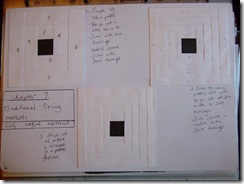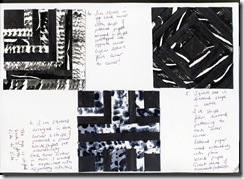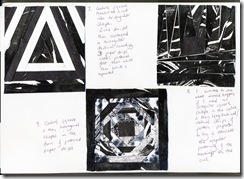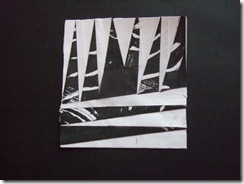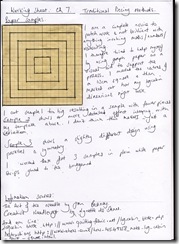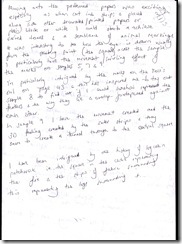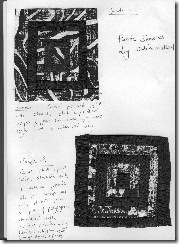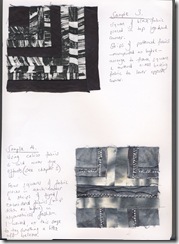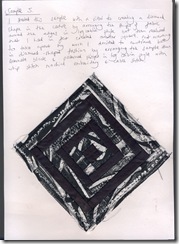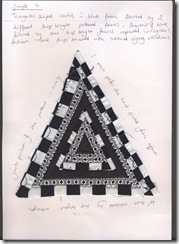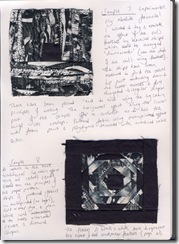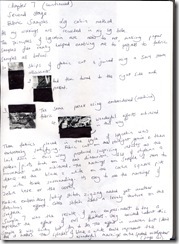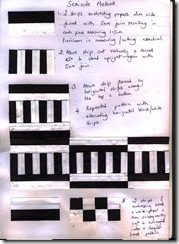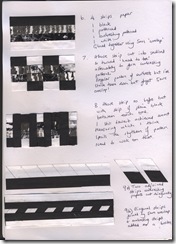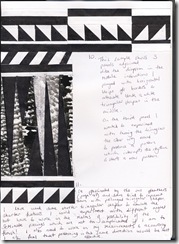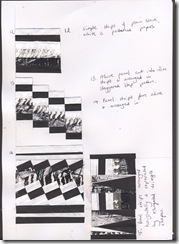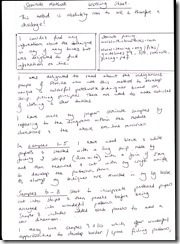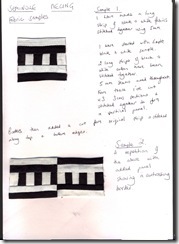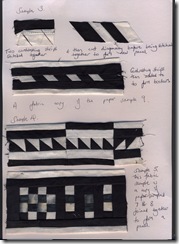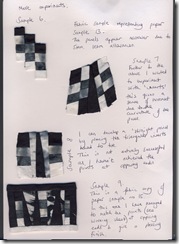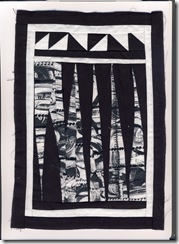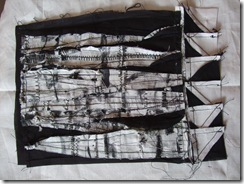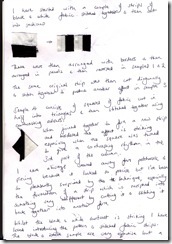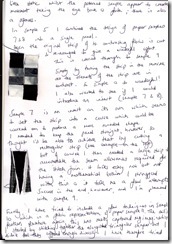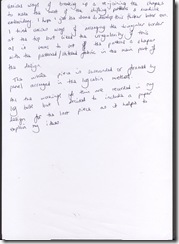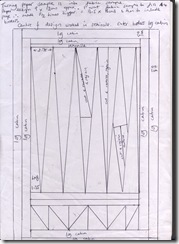Log cabin and seminole methods
Log cabin
Log cabin is completely new to me as a technique so I did some research and was fascinated to read about the symbolism involved i.e. that the square represents the fire in the centre of the room and the strips of paper in the surround represent the logs.
I have, in the past, skirted around patchwork believing it to be too difficult and precise but now pleased to have tackled it and really enjoyed it.
Log cabin is worked onto a backing fabric
I really valued this opportunity to experiment with paper as instructed in the module and began to get hooked on the technique and its effects. The samples above show my first attempts using strips of plain white paper to help get to grips with the technique itself.
The paper samples above and below use a variety of layouts whilst still using the principles of the log cabin method
In sample 8 above I wanted to experiment with a more irregular layout and longer vertical / horizontal strips. I’m fascinated by the markings on the pell’s owl and ways in which I could achieve it. I’d tried this sample initially using patterned and plain white papers but decided to add black afterwards as I felt it was more effective ,this is a photo [above] to show how different it looked.
Fabric samples
These first fabric samples show traditional log cabin methods using my hand printed fabrics and then the introduction of patterned and machine embroidered fabrics which add a wonderful new dimension and richness of pattern, rhythm and texture
This sample above is made up of bought fabrics and despite the addition of machine stitching to decorate, I feel that compared to the samples using the hand printed fabrics, it appears very flat and static.
I was really pleased with sample 7 [above] , very experimental and strips of patterned fabric, some with machine embroidered effects which gives some fabulous textural effects which I found very exciting.
Seminole method
This is also new to me and during my research I discovered that the Seminole Indians are the indigenous people of Florida who developed colourful patchwork techniques based on strip piecing principles.
Seminole isn’t worked on a backing fabric but machine stitched together using 5mm seal allowances
I started with paper samples again as below
Fabric samples.
Once again I started with the use of plain black and white strips of fabric which are cut and rearranged to develop new patterns
I am very pleased with the above sample 10 in which I’ve tried to incorporate several different techniques.
Once again I’m focusing on the owl’s feathers and how they can be represented. This work differently the other way up! Fascinating.
Sian suggested I look at pieces from behind in my tonal column work and I thought it was interesting to see the patterns on the back of sample 10

